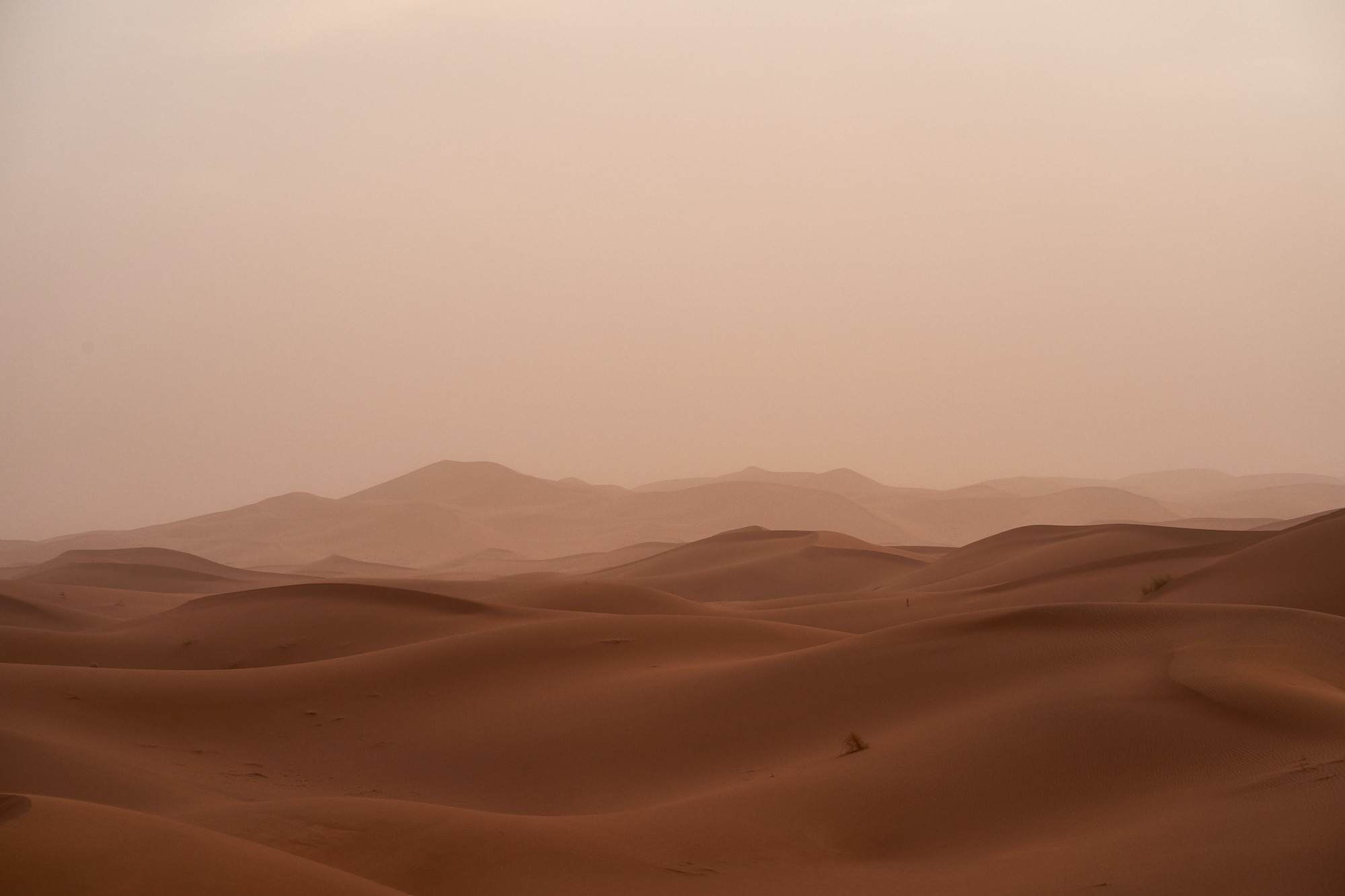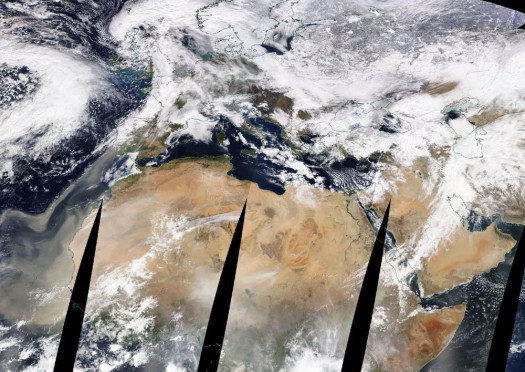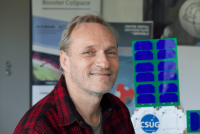How important is it to predict sand and dust storms?
Carlos Péres Garcia-Pando (CP): Dust storms are a vital part of the ecosystem, but can be a serious hazard for agriculture, transportation, the economy, and health in many countries, particularly in some of the least developed ones. We can’t easily avoid or control dust storms, so preparation for their negative effects is key. Yet, information from MET services is still not streamlined properly. For example, many terraces in Madrid were unusable after the recent dust storm over Europe, and bars and restaurants were asking why they hadn’t been properly alerted by the regional government
How has your fundamental research contributed to new knowledge?
CP: To understand and predict dust, we need models. However, a lack of knowledge means that these often contain uncertainties, a major one being the emission term—how much dust is produced, and where. To address this, through an ERC grant entitled FRAGMENT, I’m exploring fundamental aspects of the dust emission process in deserts across the world, as well as relationships between mineralogy and particle size. We are testing this in our models to better estimate the effect of dust on the climate.
How important is multidisciplinary research in this field?
CP: Dust has multifarious links to the natural environment and anthropogenic perturbations, so multidisciplinary research is absolutely critical. One potential paradigm shift is the EMIT Mission, in which I participate as a Co-Investigator. Using a spectrometer on the International Space Station, we will collect surface mineralogy data at a 60-meter resolution to obtain the first-ever mineralogy map of the Earth’s arid and semi-arid regions. The applications of EMIT extend beyond dust, such as obtaining data on vegetation type and color, which is currently an uncertainty, particularly in semi-arid regions.
How does your work contribute to the issue of global health?
CP: I’m interested in the effects of pollutants and dust on respiratory and cardiovascular disease. Through different projects, I’m looking at chemical interactions of dust with anthropogenic pollutants and contributing to quantifying their health and socioeconomic impacts across Europe. Building on past research, I also plan to further investigate the effect of dust during meningitis epidemics, as dust could render people more susceptible to developing meningitis. Although not directly related to sand and dust storms, we have recently looked at air quality changes resulting from Covid lockdowns and assisted Copernicus to calculate associated emissions and health impacts.
How have you supported technological advances?
CP: Our WMO Regional Dust Center forecast model now includes state-of-the-art parameterizations that comprise the most recent scientific advances. Also, our new and unprecedented 10 km-resolution dust reanalysis dataset for Northern Africa, the Middle East, and Europe could be useful to health, solar radiation, transportation, and aviation communities. Our data could help optimize the life expectancy of plane engines, which can be sensitive to dust and minerals. We are also linking our forecasts to the operational maintenance software of solar power plants. Cleaning dust deposits from solar panels is costly, especially where water is scarce, so predictions could help to plan cleaning cycles. Importantly, our datasets and model are open sources to facilitate further progress and other applications.
Other than through an open-access approach, how can industries be reached?
CP: We contribute heavily to CAMS-COPERNICUS to improve air quality forecasts in Europe, which can be adopted for commercial applications. In the AQ-WATCH project, we’ve established connections with providers of meteorological information, and have created forecasts for Chile, the US, and East Asia. We’ve been very active in getting feedback and recommendations from sectoral end-users about its envisioned output through the participation and organization of Training Schools and User workshops.
How has AXA facilitated collaborations?
CP: We now have the funding to invest in this core activity. We’ve put together a community of developers, modelers, and users across Europe, Northern Africa, and the Middle East. As well as sharing methods between modelers and experimentalists, we have connected with users in companies, aviation, and the health sector to find out what they need. Dr. Sara Basart, a member of the AXA Chair and Chair of the inDust Cost Action, has been key in this effort. Another challenge is collaborative action—countries in the Middle East have different ways of dealing with things, so coordination isn’t easy when faced with a regional problem.
What are some of your knowledge-sharing and communication activities?
Other than academic publications and conferences, we’ve produced informative videos for the public and content for children. We also engage with governments and policy-makers. As well as being the first official regional center of the WMO for dust prediction, members of our center sit in the Global Steering Committee and are involved in an advisory group on sand and dust storms within the United Nations Convention to Combat Desertification.
How has AXA contributed to your professional growth?
CP: I recently attained a permanent position as ICREA Research Professor; the AXA grant is quite unique, so I am pretty sure it helped a lot. The 15-year funding has been crucial for me to develop a long-term program and take risks. This, along with the flexibility to put resources where I need them, means that AXA has helped me create an impactful and comprehensive research group. Despite receiving other sources of funding, we have gaps between contracts, so without AXA’s support, these regional centers would not exist.
"Our WMO Regional Dust Center forecast model now includes state-of-the-art parameterizations that comprise the most recent scientific advances. Also, our new and unprecedented 10 km-resolution dust reanalysis dataset for Northern Africa, the Middle East, and Europe could be useful to health, solar radiation, transportation, and aviation communities."
Other future directions?
CP: One big question is what sand and dust storms will look like towards the end of the century. As well as wildfires and uncertainty in land management and vegetation, a warming world will impact dust storms—in turn, dust storms affect climate. Representing long-term changes comes with many challenges. We’re now developing Earth system models to include new processes that better represent long-term variability along with the associated effects. I’m also interested in the possibility of extending forecasting to sub-seasonal to seasonal scales.
March 2022
Find out more about Prof. Carlos Pérez García-Pando's project
Discover research projects related to the topic
Natural Catastrophes
Joint Research Initiative
Spain
Understanding Wildfire Risk: A Local-Scale Assessment Framework in Chile
Wildfire is a significant hazard across the globe, causing extensive economic, ecological and health impacts. While wildfires are common throughout... Read more

Marcos
RODRIGUES MIMBRERO




